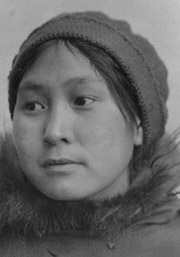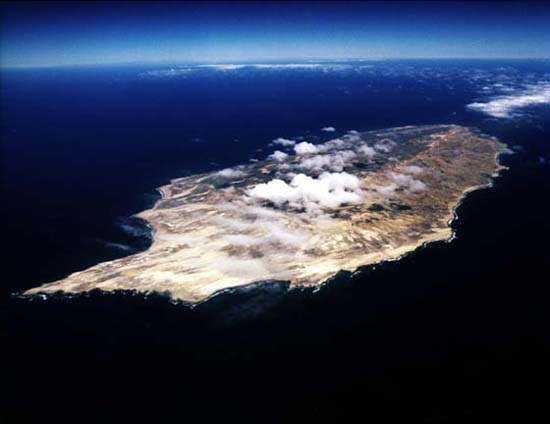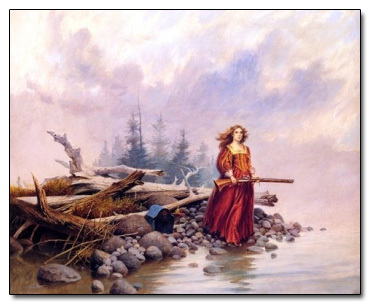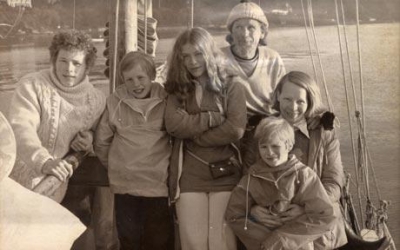True Stories Of Being Stranded On A Deserted Island
As a child growing up, my favourite films and books were along-the-lines of Castaway, Treasure Island and Robinson Crusoe. I obsessed with the idea of being stranded on a tropical island where I would transform magnificently into a female Robinson Crusoe and catch my own fish with a hand-made spear. I was so much in love with the idea that I even made my own ‘Mr Wilson’ with an old football and would hide in the bushes outside pretending I was in my own tropical cave (yes I realise I was a strange kid). For years, books and movies have entertained us with, and romanticised the idea, of castaways and deserted islands. I’m sure many of you have grown up being familiar with characters such as Crusoe, Friday and Ben Gunn, and the stories of these castaways never cease to amaze us. However, the real-life stories of castaways are even more fascinating than our well-loved fiction. Here are just some of the many incredible survival stories of people who overcame the odds, alone stranded on an uninhabited land.
Douglas Robertson & Family
Accompanied by his wife, daughter, and three sons, Douglas Robertson was an experienced sailor from Scotland who purchased Lucette, the family boat with the family’s life’s savings. While sailing to the Galapagos Islands from Panama their boat was disasterously sunk by a pod of killer whales. Already being a close knit group, the family demonstrated remarkable survival skills and were able to survive 38 days on their small dinghy. They collected rain droplets for drinking water, caught turtles and flying fish for food and sailed their way towards Central America to be rescued. By their 38th day, they were sighted by a Japanese fishing trawler heading towards the Panama Canal.
Alexander Selkirk Survived
The amazing story of Alexander Selkirk, the Scottish sailor who spent four years as a castaway, was the inspiration behind Daniel Defoe’s novel Robinson Crusoe. While Selkirk was a sailor, during an expedition he voiced his concern about the extra weight the ship was made to carry when the crew stopped for extra supplies. He tried and failed to rally others not to continue on, and in an attempt to save his own life he demanded to be put ashore on the next island they encountered. In September 1704, Selkirk was dropped off on the uninhabited island of Más a Tierra over 400 miles off the West Coast of Chile. He took with him some clothing, a musket, some tools, a Bible and tobacco. At first Selkirk simply read his Bible awaiting rescue, but it soon became apparent that the rescue wasn’t imminent. Despite being abandoned and alone, Selkirk turned out to be quite a skillful survivor. At first he remained where he felt safer along the shoreline. While waiting for someone to come to his rescue, the desperate castaway survived on oysters, shellfish and anything he could catch. That is until hungry sea lions wanted their territory back for mating season. This drove him deeper into the unbeknownst depths of the island. There, Selkirk was lucky enough to come across feral goats which provided him milk, meat and clothing as well as feral cats that protected him against the ravenous rats that attacked him at night. On February 1, 1709, four years and four months later, he was finally rescued by a privateering ship. His story became a sensation and Selkirk continued his life as a sailor, ending his career serving as lieutenant aboard the Royal ship Weymouth.
Gerald Kingsland & Lucy Irvine
Survived 1 year  In 1980 British writer/adventurer Gerald Kingsland put an ad in Time Out Magazine seeking a female companion who would want to share her life with him on a deserted island. A young 24 year old adventerous Lucy Irvine accompanied him and the two set out to Tuin Island in the Torres Strait between Australia and Papua New Guinea. From 1982-1983, they lived as self-imposed castaways on the uninhabited island. However water supply was scarce and if it hadn’t been for Badu Islanders coming to their rescue, the couple would have perished there. Upon their return to civilization, Kingsland and Irvine wrote separate accounts of their adventure. Irvine published Castaway in 1983, the story which inspired the Robert Zemicks blockbuster hit film.
In 1980 British writer/adventurer Gerald Kingsland put an ad in Time Out Magazine seeking a female companion who would want to share her life with him on a deserted island. A young 24 year old adventerous Lucy Irvine accompanied him and the two set out to Tuin Island in the Torres Strait between Australia and Papua New Guinea. From 1982-1983, they lived as self-imposed castaways on the uninhabited island. However water supply was scarce and if it hadn’t been for Badu Islanders coming to their rescue, the couple would have perished there. Upon their return to civilization, Kingsland and Irvine wrote separate accounts of their adventure. Irvine published Castaway in 1983, the story which inspired the Robert Zemicks blockbuster hit film.
Ada Blackjack
Survived 2 Years  Ada Blackjack was an Inuit woman who lived as a castaway on an uninhabited island in Northern Siberia for two years. Ada joined a team of explorers who were attempting to claim Wrangel Island for Canada, as a cook and seamstress to save money for her noly son who had chronic tuberculosis. The team left on September 16, 1921 but turned out to be inadequately prepared for the expedition that awaited them. Unfortunately they ran out of food pretty quickly, and three of the men attempted to cross the frozen sea to seek out help and more food to eat, leaving behind Ada and the scurvy-inflicted Lorne Knight. As expected, the men never returned and Ada cared for both her and Knight right up until his death in April 1923. Ada became a very resourceful survivor learning how to set up traps to capture small wild animals such as Arctic foxes, and also became quite the skilled-gunwoman managing to kill birds, seals and even fending off polar bears. On 19 August 1923 she was rescued by a man hired by the former head of the expedition who had left her and Knight there, Vilhjalmur Stefansson. Ada used the money she saved to take her small son Bennett to Seattle to cure his tuberculosis and had another son Billy. Eventually, Ada returned to the Arctic where she lived until the age of 85.
Ada Blackjack was an Inuit woman who lived as a castaway on an uninhabited island in Northern Siberia for two years. Ada joined a team of explorers who were attempting to claim Wrangel Island for Canada, as a cook and seamstress to save money for her noly son who had chronic tuberculosis. The team left on September 16, 1921 but turned out to be inadequately prepared for the expedition that awaited them. Unfortunately they ran out of food pretty quickly, and three of the men attempted to cross the frozen sea to seek out help and more food to eat, leaving behind Ada and the scurvy-inflicted Lorne Knight. As expected, the men never returned and Ada cared for both her and Knight right up until his death in April 1923. Ada became a very resourceful survivor learning how to set up traps to capture small wild animals such as Arctic foxes, and also became quite the skilled-gunwoman managing to kill birds, seals and even fending off polar bears. On 19 August 1923 she was rescued by a man hired by the former head of the expedition who had left her and Knight there, Vilhjalmur Stefansson. Ada used the money she saved to take her small son Bennett to Seattle to cure his tuberculosis and had another son Billy. Eventually, Ada returned to the Arctic where she lived until the age of 85.
Tom Neale
16 years  Author of the popular autobiography An Island to Oneself, Tom Francis Neale was a New Zealander who spent 16 years of his life (in three sessions) living alone on Suwarrow island in the Cook Islands. His first time around, Neale caught a ride with a ship passing close to Suwarrow, where they dropped him off with two cats, water tanks, a hut and some books. There he found remnants of what coast watchers had left behind during the Second World War: a damaged boat, wild pigs and chickens. Because the pigs were destroying all the vegetation, he hunted them over the course of several months. During his time there he planted a garden, domesticated the chickens, and repaired the boat. After a serious back injury in 1954, which paralyzed him for 4 days, he was lucky enough to be discovered by a couple on a yacht who nursed him back to health. They promised they would send a ship out for him and two weeks later the Cook Islands government arrived to take him back to Rarotonga. Although Neale married and had two children, he was desperate to return to his island, and in the spring of 1960 he returned with enough provisions to last him three and a half years. Once pearl divers began to invade the area in 1964, Neale reluctantly left once again. Finally, Neale returned to the again in June 1967 and stayed there until 1977. That year, another yacht found him ill, and he was diagnosed with stomach cancer and taken to Rarotonga, where he died eight months later. Crazy man.
Author of the popular autobiography An Island to Oneself, Tom Francis Neale was a New Zealander who spent 16 years of his life (in three sessions) living alone on Suwarrow island in the Cook Islands. His first time around, Neale caught a ride with a ship passing close to Suwarrow, where they dropped him off with two cats, water tanks, a hut and some books. There he found remnants of what coast watchers had left behind during the Second World War: a damaged boat, wild pigs and chickens. Because the pigs were destroying all the vegetation, he hunted them over the course of several months. During his time there he planted a garden, domesticated the chickens, and repaired the boat. After a serious back injury in 1954, which paralyzed him for 4 days, he was lucky enough to be discovered by a couple on a yacht who nursed him back to health. They promised they would send a ship out for him and two weeks later the Cook Islands government arrived to take him back to Rarotonga. Although Neale married and had two children, he was desperate to return to his island, and in the spring of 1960 he returned with enough provisions to last him three and a half years. Once pearl divers began to invade the area in 1964, Neale reluctantly left once again. Finally, Neale returned to the again in June 1967 and stayed there until 1977. That year, another yacht found him ill, and he was diagnosed with stomach cancer and taken to Rarotonga, where he died eight months later. Crazy man.
Juana Maria Survived
18 years  The Lone Woman of San Nicolas Island has become something of a legend, and tells the story of the last surviving member of the Nicoleño tribe, Juana Maria. After Russian otter killers invaded the island and massacred most of her people in 1835, missionaries heard about the news and decided to sponsor a rescue operation. All remaining members of the tribe were gathered and shipped to San Pedro Bay to live at the San Gabriel Mission; all except Juana Maria. In 1853, 18 years later, a sea otter hunter named George Nidever found her living in a hut made of whale bones and surviving on dried seal blubber. She was taken to the Santa Barbara Mission and reportedly, was fascinated by everything surrounding her. Eventually Nidever brought her home to live with him and his wife, but it wasn’t long before the new living conditions took their toll on the castaway. Just seven weeks after arriving on the mainland, she contracted dysentery (an inflammatory disorder of the intestine) and died. The Lone Woman was baptized with the Christian name Juana Maria (her native name is unknown).
The Lone Woman of San Nicolas Island has become something of a legend, and tells the story of the last surviving member of the Nicoleño tribe, Juana Maria. After Russian otter killers invaded the island and massacred most of her people in 1835, missionaries heard about the news and decided to sponsor a rescue operation. All remaining members of the tribe were gathered and shipped to San Pedro Bay to live at the San Gabriel Mission; all except Juana Maria. In 1853, 18 years later, a sea otter hunter named George Nidever found her living in a hut made of whale bones and surviving on dried seal blubber. She was taken to the Santa Barbara Mission and reportedly, was fascinated by everything surrounding her. Eventually Nidever brought her home to live with him and his wife, but it wasn’t long before the new living conditions took their toll on the castaway. Just seven weeks after arriving on the mainland, she contracted dysentery (an inflammatory disorder of the intestine) and died. The Lone Woman was baptized with the Christian name Juana Maria (her native name is unknown).
Ernest Shackleton & Crew
Survived 105 days  The famous explorer Ernest Shackleton and his crew of 28 men left England aboard the ship Endurance on August 8, 1914 with the mission of crossing the South Polar continent from sea to sea. During the expedition the ship got trapped in ice, and Shackleton and his men found themselves marooned in the Antarctic for five months. They lived on top of floating ice, fed on seals and kept warm by playing hockey and dog-sled racing. In April 1916, Shackleton and five of his men set off in three small lifeboats they had recovered, to find help on Elephant Island. The six men spent 16 days crossing 1,300 km of ocean, and eventually landed on an uninhabited part of the island. Lastly, they managed to cross 26 miles of treacherous mountains and glaciers until they finally reached a whaling station where they found help. Shackleton returned to rescue the men on Elephant Island and amazingly, apart from some missing toes from frostbite, not one member of the 28-man crew was lost.
The famous explorer Ernest Shackleton and his crew of 28 men left England aboard the ship Endurance on August 8, 1914 with the mission of crossing the South Polar continent from sea to sea. During the expedition the ship got trapped in ice, and Shackleton and his men found themselves marooned in the Antarctic for five months. They lived on top of floating ice, fed on seals and kept warm by playing hockey and dog-sled racing. In April 1916, Shackleton and five of his men set off in three small lifeboats they had recovered, to find help on Elephant Island. The six men spent 16 days crossing 1,300 km of ocean, and eventually landed on an uninhabited part of the island. Lastly, they managed to cross 26 miles of treacherous mountains and glaciers until they finally reached a whaling station where they found help. Shackleton returned to rescue the men on Elephant Island and amazingly, apart from some missing toes from frostbite, not one member of the 28-man crew was lost.
Marguerite de La Rocque
Survived 2 years  In 1542 French explorer Jacques Cartier led a voyage to Newfoundland, accompanied by 19 year old Marguerite, de La Rocque. During the journey, Marguerite became the lover of a young man, and displeased with her actions, Marguerite’s uncle, Lieutenant General and pirate Jean-François Roberval marooned her on the “Isle of Demons” (now called Harrington Island) near the Saint-Paul River. Also marooned were Marguerite’s lover, and her maid-servant. Marguerite gave birth to a child while on the island but the baby died, (probably due to insufficient milk), as did the young man and the maid servant. Marguerite survived by hunting wild animals and lived in a cave for two years until she was rescued by Basque fishermen.
In 1542 French explorer Jacques Cartier led a voyage to Newfoundland, accompanied by 19 year old Marguerite, de La Rocque. During the journey, Marguerite became the lover of a young man, and displeased with her actions, Marguerite’s uncle, Lieutenant General and pirate Jean-François Roberval marooned her on the “Isle of Demons” (now called Harrington Island) near the Saint-Paul River. Also marooned were Marguerite’s lover, and her maid-servant. Marguerite gave birth to a child while on the island but the baby died, (probably due to insufficient milk), as did the young man and the maid servant. Marguerite survived by hunting wild animals and lived in a cave for two years until she was rescued by Basque fishermen.









